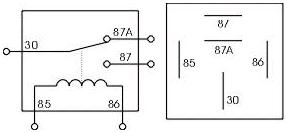VWBobby 10+ year member
PG and SS nuthugger
I could not disagree with you more. I have customers with those $20,000+ systems, and trust me, you can hear a HUGE difference between that, and aTechnology has improved drastically in the electronics industry and because of that, the downsides of class D circuits have been all but removed... especially with respect to the limits of human hearing. But of course, there are those die hards who will never like something new because their something old seemed so wonderful.
And of course, those die hards indoctrinate their progeny into believing the old is the only good and that's why you can still buy a $30,000.00 class A amp that produces 10 watts per channel. And, you can connect your $25,000.00 record player to that amplifier so they can listen to the wonderful 250-10,000 Hz frequency response of your aged vinyl... complete with all the original hissing and scratching they think they always loved so much.
I'm not saying you can't design and build your own stereo/theater system for less than $2,000 that can compare in SQ to those $20,000 systems. Knowing where to source raw drivers, I could easily build some
I own a PPI Ion 650, Discus DSC1500.1D, and many other class D amps and I would put them on a par with other I have a $700 Kenwood 5 channel amp that I bought new in 2002 that sounds as good as some of the McIntosh, Audison and Treo amps I have heard. Kenwood had a solid design in the Excelon KAC line.
The one exception I have heard in the Class D, G, Gh or T technology in SQ is the JL Audio HD and XD amps. I have demo'd those amps A-B with about 10 other amps on a well stocked demo wall. This was playing through a set of $1100 Focal 3-ways and a few other sets (brands) for comparison. The JL amps sounded at least 95% as nice as the other high end A/B amps. There was a very small difference in SQ that I was not able to pinpoint, other than "hollow" midrange.
This same pissing match happens in the guitar and pro audio world. You can not achieve the same SQ with a $200 amp, that you will get with a $600 - 2000 amp. It just isn't going to happen. Otherwise Mesa-Boogie, Marshall, and many others could not charge as much as they do for the quality or tone.
Measuring frequency response on an RTA will tell you one thing....that the amp can reproduce "A" signal between 20-20khz. Is it flat or wavy? Will your ears discern the lack of reproduction at CERTAIN frequencies? Maybe. I know my failing ears can hear spots that certain amps or speakers will not reproduce accurately. I am not an audiophile snob, but I do know SQ. This is why most people do not like a system that is set by RTA for "SQ" comps and will usually EQ their signal to their own personal preference, or to make up for a lack of certain frequency reproductions.
Don't take this as a personal attack. I encourage you to A-B amps on the same set of your favorite comps, with no sub, and tell me you can not hear a difference between a high end A/B and your typical I have spent many hours in the car and home audio shops doing just this, so I could choose what sounded best to me, and typically it was surprising what cheaper equipment sounded on par with the high end. This is why some models outshine others, within the same brand. //content.invisioncic.com/y282845/emoticons/smile.gif.1ebc41e1811405b213edfc4622c41e27.gif






